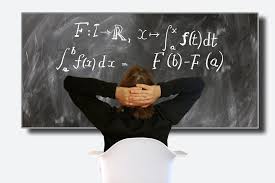Introduction

History of Calculus
Isaac Newton and Gottfried Wilhelm Leibniz are two prominent mathematicians and scientists credited with independently developing the foundations of calculus, a branch of mathematics that deals with rates of change and the accumulation of quantities. Both Newton and Leibniz made significant contributions to the development of calculus, and their work laid the groundwork for modern calculus as we know it today.
Isaac Newton:
1. Method of Fluxions: In the late 1660s and early 1670s, Isaac Newton developed his own method of calculus, which he called "method of fluxions." He focused on the idea of "fluxions," which represented infinitesimal rates of change. Newton's work involved the use of limits and derivatives to study curves and their rates of change.
2. Fundamental Theorem of Calculus: Newton's work led him to the fundamental theorem of calculus, which connects the concept of the integral to that of the derivative. It states that if F(x) is the integral of a function (f(x), then F'(x) = f(x), where F'(x) represents the derivative of F(x).
Gottfried Wilhelm Leibniz:
1. Differential and Integral Calculus: Independently of Newton, Leibniz developed his own version of calculus in the late 1670s and early 1680s. He introduced the concept of differentials and integrals, using notations such as dx and that are still in use today.
2. Leibniz Notation: Leibniz's most significant contribution to calculus is the notation that he introduced, which is widely used in calculus to this day. The notation for the derivative, dy/dx, and the integral, f(x)dx, are examples of Leibniz's notations.
3. Product Rule and Chain Rule: Leibniz also formulated the product rule for differentiating the product of two functions and the chain rule for differentiating composite functions.
The work of Newton and Leibniz on calculus led to a heated priority dispute in the 18th century, with both claiming to have independently discovered the subject. Today, both are credited as co-founders of calculus, and their contributions are recognized as separate but equally significant developments that revolutionized mathematics and had far-reaching implications in science and engineering.
Giving students a historical perspective of Calculus leads to improved understanding and performance in my opinion. Understanding the approach of Newton compared to Leibniz will enable students to gain a deeper understanding of the subject, to address its core concepts, and to receive a behind-the-scenes look at what happens when you take a derivative, integral of finding the area under the curve.